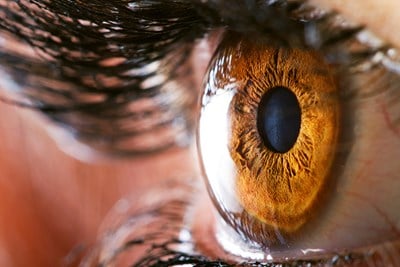With so many different underlying causes of blindness, the question of a cure becomes more complicated than a simple yes or no. Many disorders have cures, while others have treatments but no miracle remedy. For other disorders, researchers are on the cutting edge of discovering amazing new treatments. Here’s a look at some of the treatments for different kinds of blindness.
Treatments for Common Causes of Blindness
Cataracts affect almost half the world’s population. The lens of the eyeball becomes cloudy, making vision difficult. There are no eye drops or medications for cataracts -- surgery is the only solution. Luckily, it is a safe and effective one. The eye is numbed, and the cloudy lens removed and replaced with an artificial alternative.
Glaucoma is a group of issues surrounding damage to the optic nerve. There is no cure for glaucoma, some types have no warnings signs of the development, and any damage already caused is impossible to undo. Eye drops, prescription medications, and surgeries can help slow the advancement of glaucoma, though.
Retinitis Pigmentosa
Retinitis pigmentosa (RP) also refers to a group of disorders that cause degeneration of the retina. These inherited disorders cause the light sensitive rods and cones to slowly die out, causing blindness over time. Leber congenital amaurosis (LCA) is one of the more severe forms of RP that has experienced a revolutionary leap through gene therapy. In fact, the Foundation Fighting Blindness reports that “more than 40 children and young adults who were virtually blind have had some vision restored.” Certain dietary supplements can make the diseases progress more slowly, and a medication known as valproic acid is currently being studied. A stem-cell treatment is currently in the works and appearing highly successful in studies, as well.
While prostheses have been used for centuries on other appendages, Time reports the “bionic eye” is finally making its way to “curing” blindness. It’s important to understand that blindness is ultimately because of two things: the eyes don’t work, or the part of the brain that receives what the eyes see doesn’t work. Not exactly a prosthetic eye, the Argus II design involves a retinal implant that corresponds with a pair of sunglasses. The tiny video camera attached to the sunglasses takes in images and sends signals to the retinal implant. From there, electric pulses are sent out, bypassing cones and rods that are already dead so that the healthy ones receive it instead -- and these photoreceptors are able to send an accurate image to the brain.
Age-Related Macular Degeneration
The macula is a tiny spot in the retina that helps you focus on the details right in front of you, like fine print or cross stitching. As it gets older, the macula deteriorates -- along with the part of the eye that keeps it healthy -- and in some people, leaving them unable to see things right in front of them (although peripheral vision is often usable). Scientists have found stem cells can replace these cells, leading to groundbreaking treatment of macular degeneration in older adults.
Cures for blindness have been making leaps and bounds in recent years, as biologists finally come to understand what’s causing disorders to cause blindness. And while it may take some time for every cause of blindness to be next on the table, there’s some serious progress going around.



